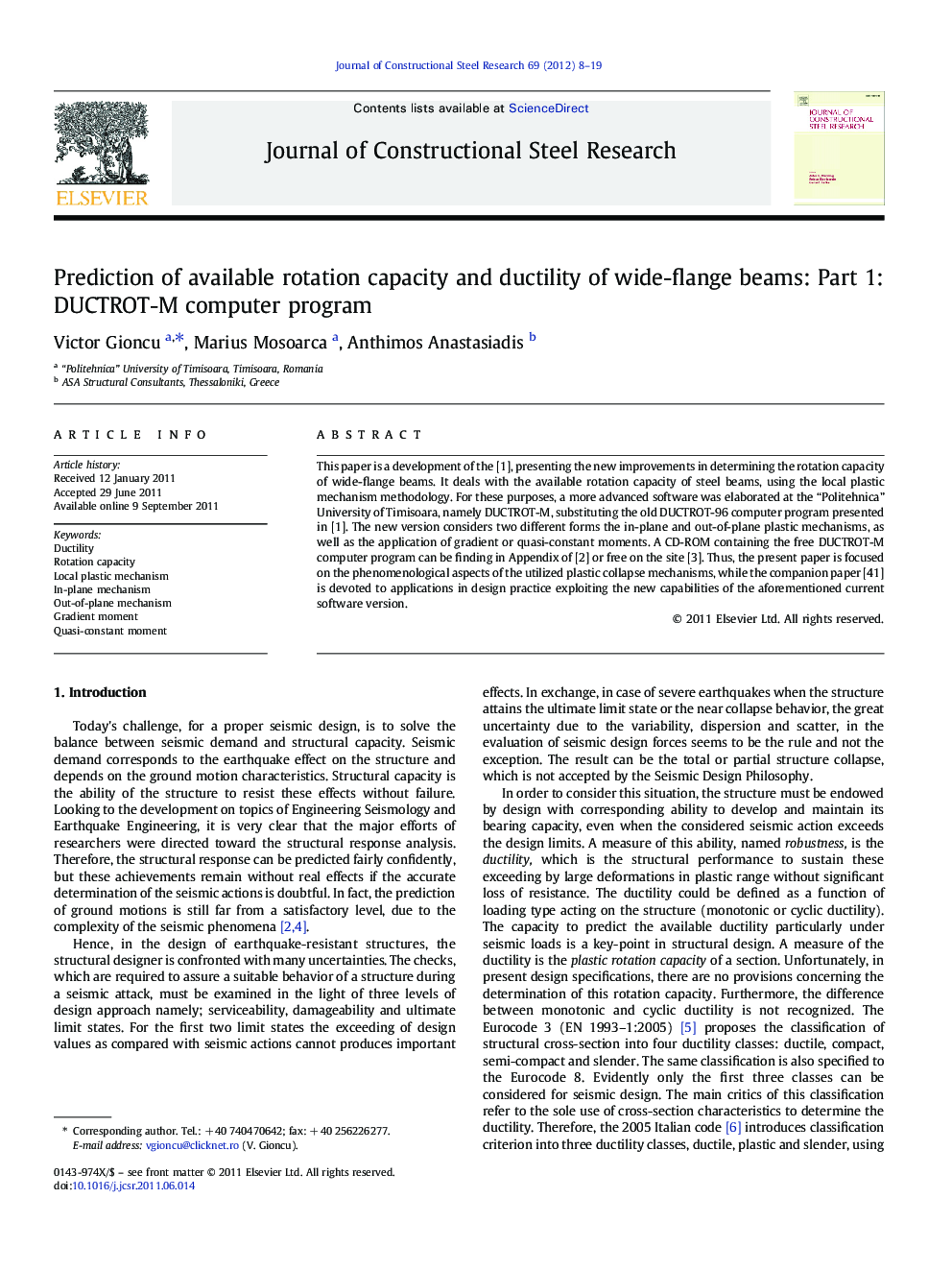| Article ID | Journal | Published Year | Pages | File Type |
|---|---|---|---|---|
| 285290 | Journal of Constructional Steel Research | 2012 | 12 Pages |
This paper is a development of the [1], presenting the new improvements in determining the rotation capacity of wide-flange beams. It deals with the available rotation capacity of steel beams, using the local plastic mechanism methodology. For these purposes, a more advanced software was elaborated at the “Politehnica” University of Timisoara, namely DUCTROT-M, substituting the old DUCTROT-96 computer program presented in [1]. The new version considers two different forms the in-plane and out-of-plane plastic mechanisms, as well as the application of gradient or quasi-constant moments. A CD-ROM containing the free DUCTROT-M computer program can be finding in Appendix of [2] or free on the site [3]. Thus, the present paper is focused on the phenomenological aspects of the utilized plastic collapse mechanisms, while the companion paper [41] is devoted to applications in design practice exploiting the new capabilities of the aforementioned current software version.
► The new improvements in determining the rotation capacity of wide-flange beams are discussed. ► A new version of the DUCTROT-M software for the prediction of the available ductility is presented. ► Focus is provided on the phenomenological aspects of the utilized plastic collapse mechanisms. ► The in-plane and out-of-plane local plastic mechanisms, implemented in DUCTROT-M, are investigated. ► The accuracy of the software was revealed by comparing experimental and numerical tests.
